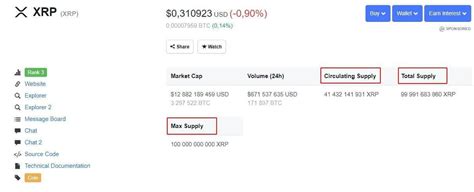Unknown heroes of cryptocurrency: understanding the difference between circulating supply and total supply
When it comes to understanding the cryptocurrency world, two times two terms are thrown without too many thoughts: “Circulation of supply” and “total supply”. While both refer to the total amount of currency coins in circulation, they represent different concepts that are crucial for understanding the complexities of the cryptocurrency economy.
What is circulating supply?
Circulation providing refers to the number of coins that are currently used or traded. Represents the number of currencies available for purchase, exchange or use by natural persons and institutions. This includes not only physical coins in circulation, but also digital chips stored on exchanges, wallets and other online platforms.
For example, if you buy a bitcoin, you are essentially purchased 1 unit of cryptocurrency, which is then added to the “circulating supply”. If you change a bitcoin for another currency, the total circulation power remains the same.
What is the total offer?
On the other hand, the total offer refers to the total number of coins that will ever be created. It represents a fixed amount that will never change, regardless of the fluctuations or market demand. This term is often used to describe the concept of “total wealth” in the economy of cryptocurrencies.
The total supply of a particular currency is usually related to its basic asset, such as the gold or Fiat currency. For example, the total offer of Bitcoin is limited to 21 million units, ensuring that there will always be sufficient coins in circulation for market demand.
key differences
So what are the main differences between circulating power and total supply? Here are some key distinctions:
* Circulating supply to total supply : Circulating supply represents the current number of currencies available for use or trading, while total supply refers to the fixed amount that will ever be created.
* Market impact

: The circulating offer is subject to market fluctuations and changes, which can affect its price. Instead, the total offer is a fixed value that remains unchanged regardless of the market conditions.
* liquidity : Circulating supply can be affected by liquidity levels at exchanges, because the coins that can be easily sold can see an increase in circulating supply. However, the total offer is not directly influenced by liquidity.
implications and apps
Understanding the difference between the circulating offer and the total offer has significant implications for investors, traders and market participants:
* Investment strategies : Investors can use this knowledge to inform their investment decisions, such as buying or selling coins based on price changes.
* Market analysis : Understanding the circulating and total offer helps analysts analyze market trends and identify potential risks and opportunities.
* Regulatory compliance : Cryptocurrency exchanges and wallets must comply with the regulatory requirements related to circulating supply and total supply.
In conclusion, understanding the distinction between circulating supply and total supply is essential for browsing the cryptocurrency economy in the complex world. Understanding these two concepts, individuals can make more informed decisions about investments, trading and using cryptocurrencies in their daily lives.

